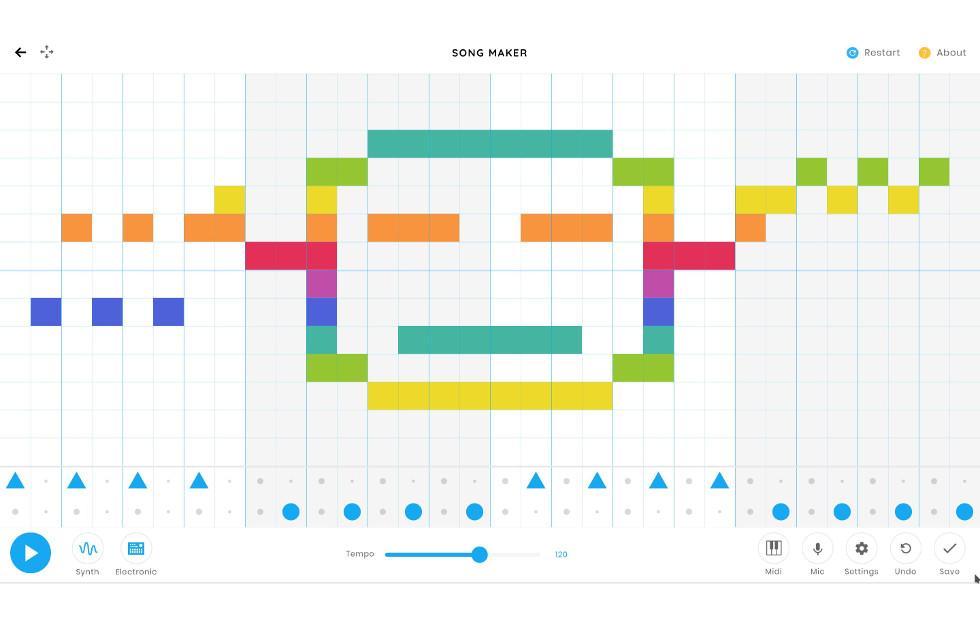

The system then plays your shapes, with certain shapes developing faces and different sounds. Kandinsky is gloriously simple! You start with a totally blank canvas, and simply stroke shapes onto the page. We’ve used it to create QR codes which are then stuck into books, or on displays, for people to interact with. You can also save your work as a link, to share or revisit as you see fit. It’s a fantastic way of getting children to work with grids when making musical patterns, and the application for sequencing and pattern in math’s is endless. The initial layout differs depending on the device being used, but you can change how many bars you work with, as well as tempo and sounds. Each note on the top grid is colorized to match used note colors, and the bottom grid uses circles or triangles to represent bass or snare sounds. The entire operation is touch based you touch a block to add sound, you touch it again to remove it.

Song Maker is a really simple arrange screen setup which allows you to learn about and begin to create simple songs using some preset melodic and drum sounds. In this post, I will focus on three of the experiments: Song Maker, Kandinsky and Rhythm. Each one has applications in music, science and mathematics. In total, there are 13 “experiments” to teach and learn with. Chrome Music Lab is one of those apps, and boy does it deliver in the classroom! One of those things is creating quirky, innovative apps which just tick all of the right boxes. Google, for all of their all encompassing status, are great at many things. Think about how many other instruments or notation systems use these same colours.After over 15 years in education and with music as his speciality, Andrew Keegan, shares his thoughts on Google Chrome Music Lab.Ī little while back, I stumbled upon a hidden gem of the Internet: Think about it! The Chromatic Colour System is a legitimate standardized notation system first theorized by Isaac Newton in 1702 and adapted by many. Uses the Chromatic Colour System (the same as Boomwhackers) You can save the screen to your clipboard by pressing ‘PrtScn’ key on your keyboard. Save them in a portfolio on Google Doc or a Google Site (discussed later).

Your video for generating a shareable link. To do this, start by clicking on the ‘Save’ Button to see the options. Check out my blog post on how MIDI works to give you an idea of how different apps render these MIDI files. Finale, for the most part, is pretty good at what was intended.
Google chrome music lab song maker software#

Check this instructional video Possible Applications


 0 kommentar(er)
0 kommentar(er)
